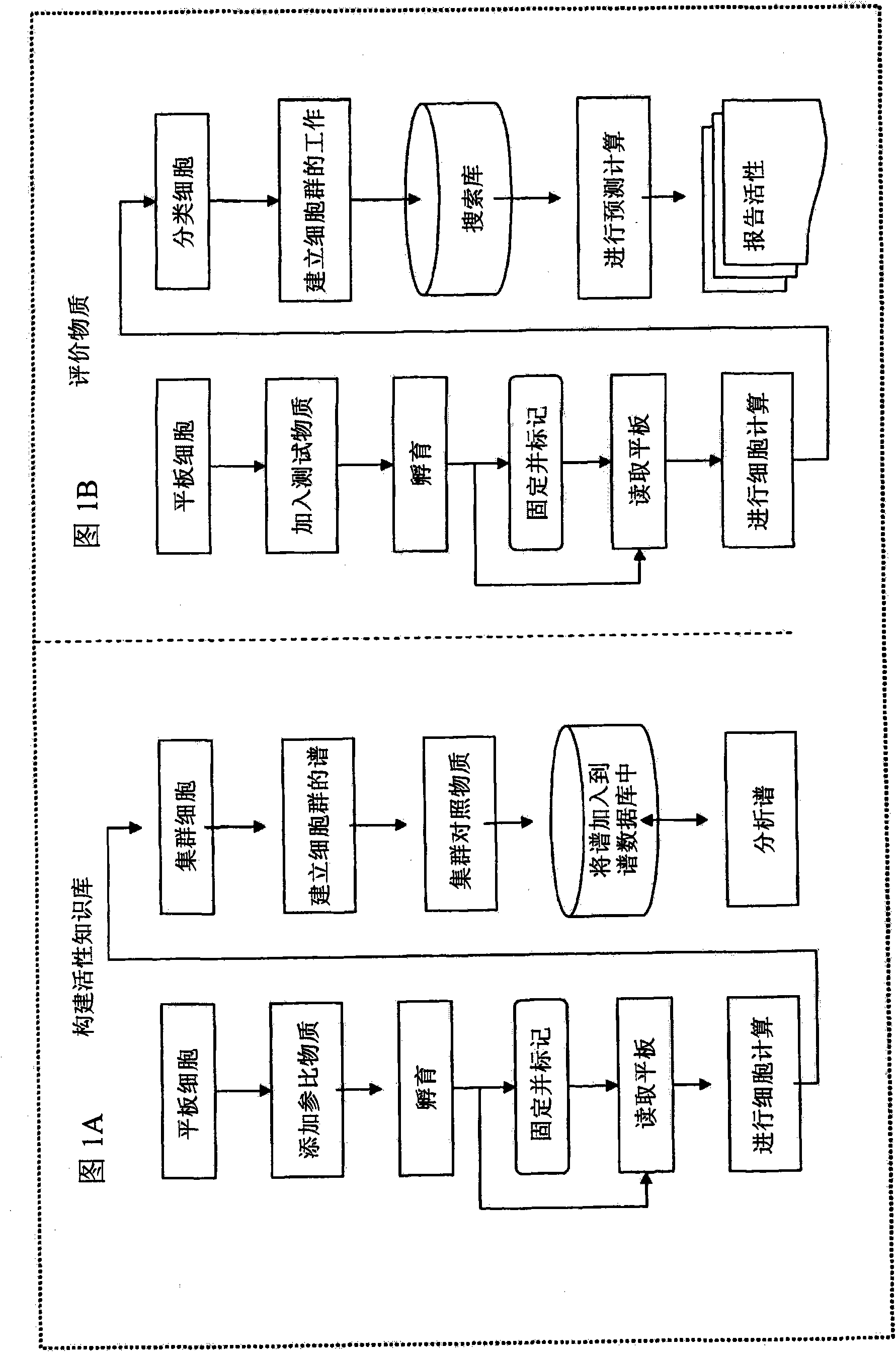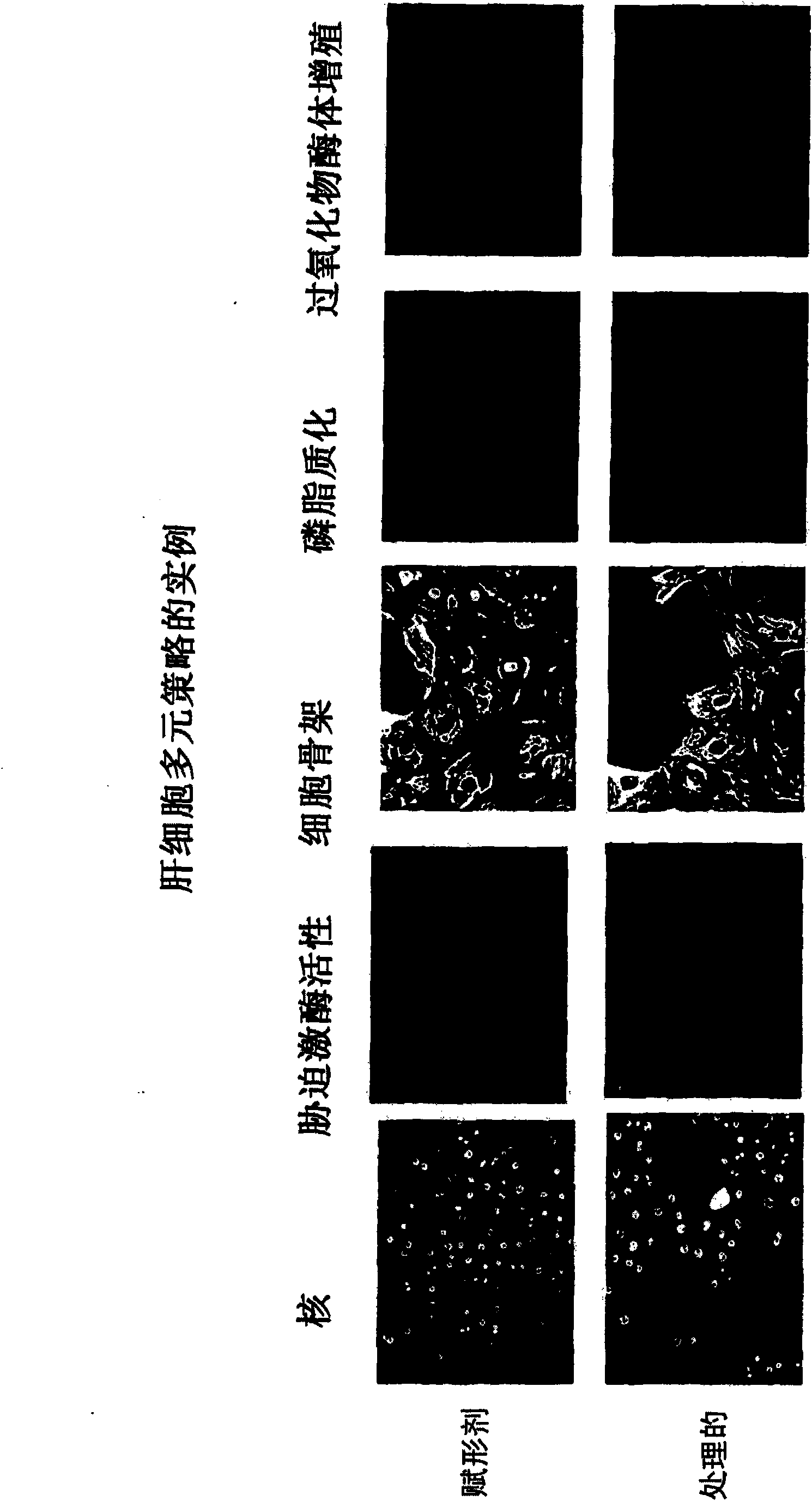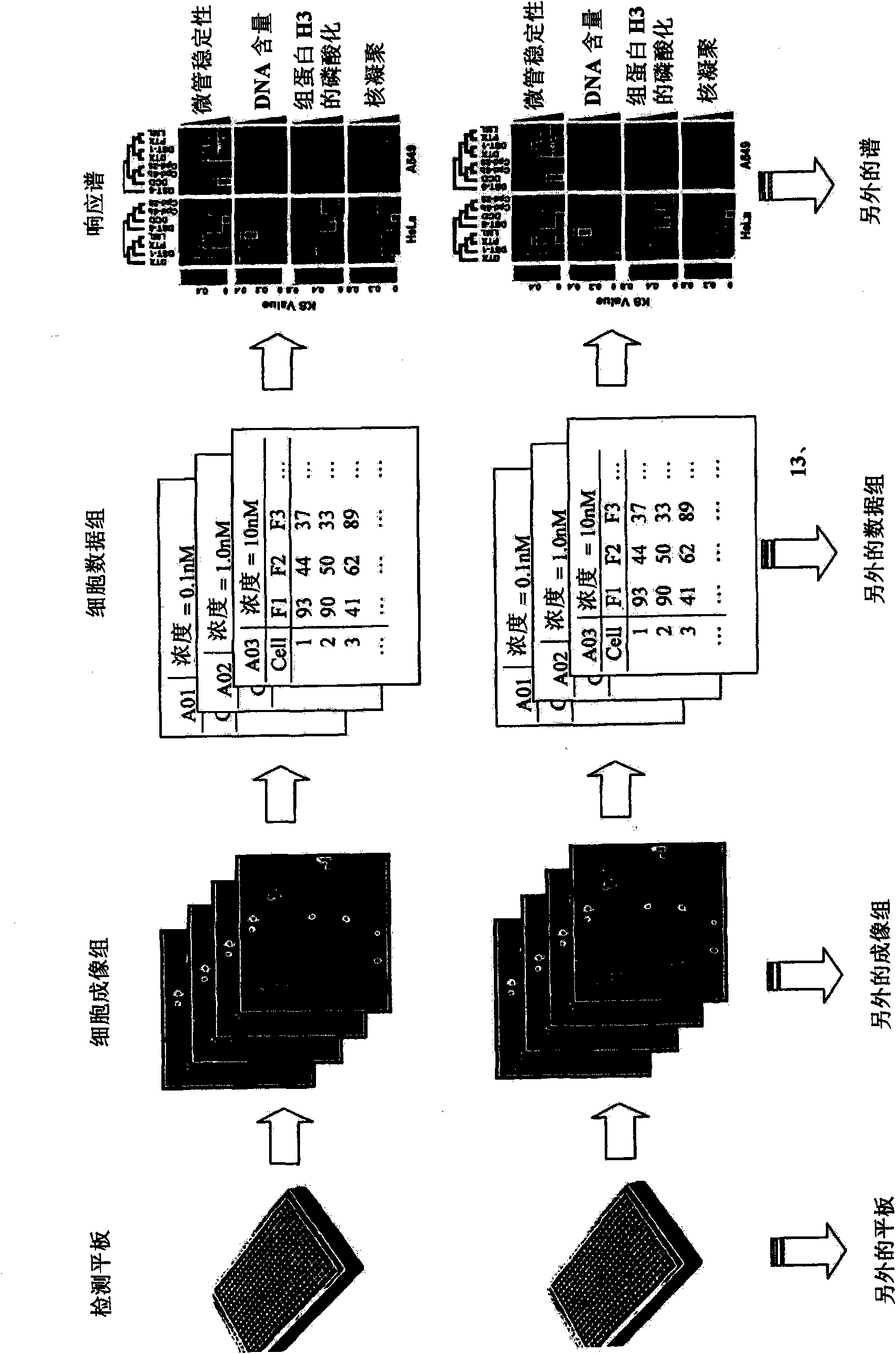Method for predicting biological systems responses in hepatocytes
A hepatocyte and biological technology, applied in the field of predicting the response of biological systems in hepatocytes, can solve the problem of missing multiple functions of hepatocytes
- Summary
- Abstract
- Description
- Claims
- Application Information
AI Technical Summary
Problems solved by technology
Method used
Image
Examples
preparation example Construction
[0045] Multiple markers can be combined in the preparation of a single sample to provide detection of multiple features in each individual hepatocyte in the population as well as in the entire population (Zhang et al., Cell, 2004.119(1): p.137 -44; Taylor et al., Drug Discov. Today, 2005.2(2): p.149-154). Quantum dots with a single stimulus wavelength and a narrow emission band offer the possibility of achieving a higher degree of diversity in testing (Michalet, et al., Science, 2005.307(5709): p.538-44) . In addition to fluorescent probes of various colors, a variety of bioluminescent and chemiluminescent reagents can also be effectively used in cell-based assays (Hemmila et al., J Fluoresc, 2005, 15(4): p.529- 42; Roda et al., Trends Biotechnol, 2004.22(6): p.295-303).
[0046] The hepatocytes can be plated on a substrate, such as a microplate, microscope slide, or other laboratory dish typically used for cell-based assays. Additionally, hepatocytes can be maintained on f...
Embodiment 1
[0071] This example demonstrates an embodiment of the invention in which a panel of test functional classes is used to create a profile of substances producing hepatotoxicity.
[0072] The functional categories to be tested for toxicity include stress pathways, mitochondrial function, cell cycle phase, morphological changes, apoptosis, nuclear changes, phospholipids, and peroxisome proliferation. In one embodiment, said functional class to be tested for toxicity is selected from the group consisting of mitochondrial function, apoptosis, nuclear alteration, phospholipidation, steatosis and DNA damage. In a preferred embodiment, at least one of said functional classes to be tested for toxicity is phospholipidation or steatosis. In another preferred embodiment, at least two functional classes are tested for toxicity, at least one of which is phospholipidation or steatosis. In another preferred embodiment, at least three functional classes are tested for toxicity, at least one of...
PUM
 Login to View More
Login to View More Abstract
Description
Claims
Application Information
 Login to View More
Login to View More - R&D
- Intellectual Property
- Life Sciences
- Materials
- Tech Scout
- Unparalleled Data Quality
- Higher Quality Content
- 60% Fewer Hallucinations
Browse by: Latest US Patents, China's latest patents, Technical Efficacy Thesaurus, Application Domain, Technology Topic, Popular Technical Reports.
© 2025 PatSnap. All rights reserved.Legal|Privacy policy|Modern Slavery Act Transparency Statement|Sitemap|About US| Contact US: help@patsnap.com



